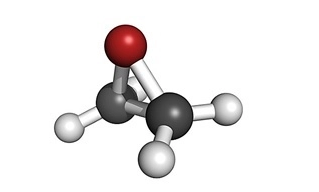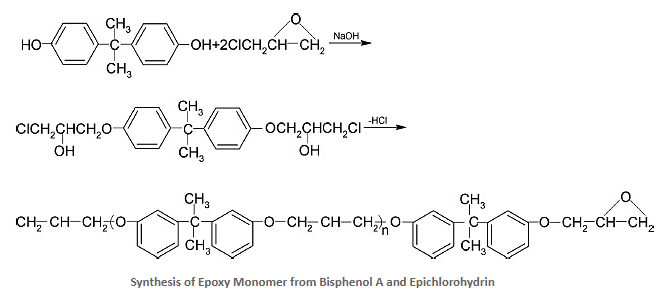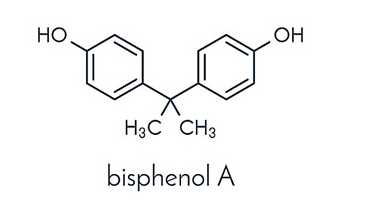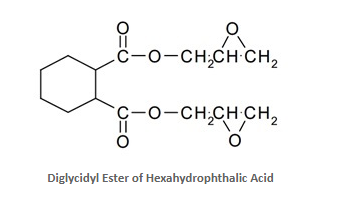What makes Epoxy Resin versatile?
The term "epoxy", "epoxy resin", or "epoxide" (Europe), α-epoxy, 1,2-epoxy etc. refers to a broad group of reactive compounds that are characterized by the presence of an oxirane or epoxy ring. This is represented by a three-member ring containing an oxygen atom that is bonded with two carbon atoms already united in some other way.

Hence, the presence of this functional group defines a molecule as an epoxide – WHERE molecular base can vary widely resulting in various classes of epoxy resins. And they are successful because they offer the diversity in molecular structure that can be produced using the same chemical method.
Further epoxy resins can be combined with varied curing agents, modifiers to achieve the properties required for a specific application.
Epoxy resins are typically formed by the reaction of compounds containing at least two active hydrogen atoms (polyphenolic compounds, diamines, amino phenols, heterocyclic imides and amides, aliphatic diols, etc.) and epichlorohydrin.
The synthesis of diglycidyl ether of bisphenol A (DGEBA), the most widely used epoxy resin monomer, is:

The oxirane group of an epoxy monomer reacts with different curing agents such as aliphatic amines, aromatic amines, phenols, thiols, polyamides, amidoamines, anhydrides, thiols, acids and other suitable ring opening compounds; forming rigid thermosetting products. The cured epoxies are brittle in nature due to the high degree of cross-linking, and they contribute to weakening epoxy impact strength and other relevant properties.
Hence, modification of epoxy monomers is necessary to improve their flexibility and toughness as well as thermal properties.
The three primary classes of epoxies used in composite applications are:
Phenolic glycidyl ethers
Aromatic glycidyl amines and
Cycloaliphatics
Phenolic Glycidyl Ethers
They are formed by the condensation reaction between epichlorohydrin and a phenol group. The structure of phenol-containing molecule, number of phenol rings distinguish different types of epoxy resins. A showed above DGEBA (diglycidyl ether of bisphenol-A) is one of the most widely used epoxy resins today.

Modifying the ratio of epichlorohydrin to BPA during production can generate high molecular weight resin. This HMW increases visocity and hence these resins are solid at room temperature. Other variations in this class include hydrogenated bisphenol-A epoxy resins, brominated resins produced from tetrabromo bisphenol-A, diglycidyl ether of bisphenol-F, diglycidyl ether of bisphenol-H, diglycidyl ether of bisphenol-S etc. Brominated resins are flame retardant and mostly used in electrical applications. Further, DGEBH shows promising weather resistance and DGEBS is used to obtain thermally stable epoxy
resin.
Phenol and cresol novolacs are another two types of aromatic glycidyl ethers. They are produced by combining either phenol or cresol with formaldehyde produces a polyphenol. This polyphenol is subsequently reacted with epichlorohydrin to generate the epoxy resin with high functionality and high cured Tg.
Aromatic Glycidyl Amines
They are formed by reaction epichlorohydrin with an amine, with aromatic amines suitable dof rhigh temperature application. The most important resin in this class is tetraglycidyl methylene dianiline (TGMDA)

TGDMA resins offer excellent mechanical properties and high glass transition temperatures and suitable for advanced composited for aerospace applications.TGPAP – Triglycidyl p-amino-phenol is another type of glycidyl amine. It exhibits low viscositry at RT and hence commonly blended with other epoxies to modify the flow or tack of the formulation without loss of Tg.
Other commercial glycidyl amines include diglycidyl aniline, tetraglycidyl meta-xylene diamine. The primary disadvantage of this class is cost which can be higher as compared to Bis-A resins.
Clycloaliphatics
Cycloaliphatic epoxy resins are designed applications requiring high-temperature resistance, good electrical insulation performance and UV resistance. They contain an epoxy ring that is internal to ring structure.
Cycloaliphatic epoxy resin formulations are used to fabricate many fiber-reinforced structural components. Formulations incorporating these resins can exhibit high glass transition temperatures in the range of 200°C.
An important and widely used cycloaliphatic epoxy resin is the diglycidyl ester of hexahydrophthalic acid and 3,4-Epoxycyclohexylmethyl-3',4'-epoxycyclohexane.

Capabilities
Payment Methods
Specials Price
Carriers
Support Hobbyist
Certificate
Customer Support
Follow Us
Tel: 1-905-339-2881
Email: sales@goldphoenixpcb.com , tech@goldphoenixpcb.com
Copyright Gold Phoenix PCB Co., Ltd. 2011 - 2025
Tel: 1-905-339-2881 Email: sales@goldphoenixpcb.com , tech@goldphoenixpcb.com
Quality Control System
|
Products/Service
|
Friendly Links
Copyright Gold Phoenix PCB Co., Ltd. 2011 - 2025


